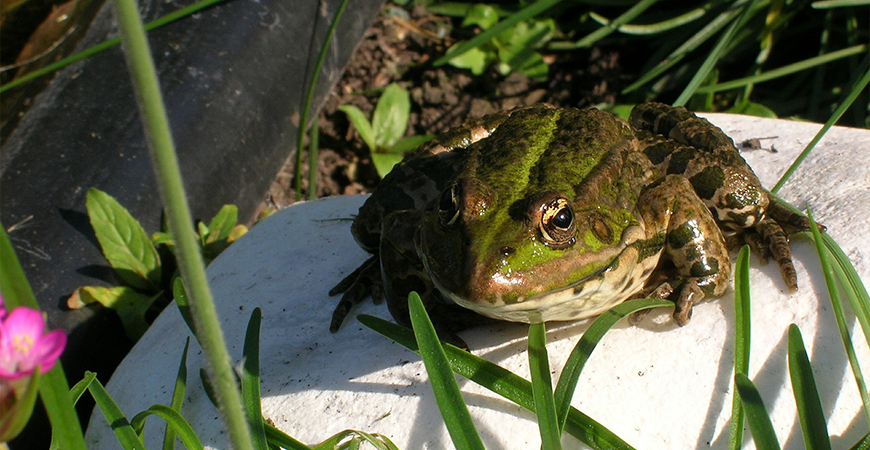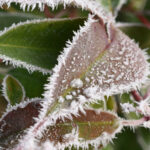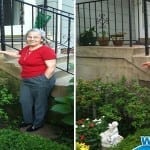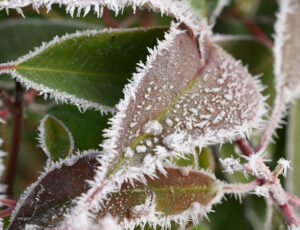
How to Protect Your Plants from these 5 Common Garden Pests
Come spring, homeowners are sure to see common and uncommon garden pests. Although bugs like ladybugs can be beneficial, others like aphids or mealybugs can damage your plants.
Here we cover the 5 most common garden pests and how to protect your plants from insect damage.
1) Aphids
Aphids are tiny, soft-bodied insects approximately 1/2 inch long and usually light in color. In addition, some are green, yellow, brown, red, or black, depending on the species.
Aphids suck the sap from the plant’s leaves, leaving the foliage yellowed, curled, and limp. An aphid infestation on a plant will evenly stunt the plant’s growth.
Aphids are commonly found in home vegetable gardens on beans, melons, cucumbers, potatoes, squash, peas, and tomato plants.
How do I know if my plants have aphids?
If a plant looks wilted or yellow, check the underside of the leaves for aphids. This is where they hide.
Another sign that you may have aphids is you may see several ants on the plant as well. Ants often accompany aphids because they feed on aphid “honeydew,” a sticky substance that they secrete.
How do I get rid of aphids?
First, remove and discard any infected leaves or stems from the plants. However, if the plant has a heavy infestation, consider pulling and tossing the plant to prevent more garden problems.
Then, control aphids organically by spraying the plant with a strong stream of water from the hose. The water will knock the pests off the foliage. Lastly, apply insecticidal soap or neem oil because it’s effective at controlling aphids.
Consequently, try and encourage beneficial insects like ladybugs and lacewings to visit your garden as they enjoy a tasty meal of aphids.
2) Caterpillars
Some caterpillars are harmless, while others like cutworms, cabbage looper, tomato hornworms, cabbage worms, diamondback moth caterpillars, fall webworms, and armyworms can cause considerable damage in the garden.
Caterpillars will chew ragged holes in plant foliage and cut off young tender shoots. So removing these green crawlers from your vegetable plants may be best.
How do I get rid of caterpillars?
To get rid of caterpillars, you can pick them off by hand and relocate them to a nearby forest preserve or park.
However, if you have more than you can reasonably remove by hand, use a commercial garden pest product to control them. If you have caterpillars in your vegetable garden, choose a safe product for vegetables such as spinosad, neem oil, or bacillus thuringiensis.

3) Japanese Beetles
Mature Japanese beetles, sometimes called “June Beetles,” are about 1/2 inch long. Their iridescent blue-green upper body and copper-to-bronze-colored wings make them easy to spot.
Japanese beetle larvae during the winter in the ground and emerge in the spring. Once they emerge, they will immediately begin to consume any or all plant foliage around them.
They will chew large holes in plant leaves, causing considerable damage and potentially threatening garden plants. Japanese beetles live in large colonies flying from one area to another and feeding along the way.
These voracious garden pests feed on a vast number of garden plants. If they’re not kept under control, they can decimate grasses, shrubs, trees, and garden plants in record time.
How do I get rid of Japanese beetles?
Because this nuisance insect migrates, it is nearly impossible to eradicate Japanese beetles. It can be difficult to eradicate mature Japanese beetles, so several controls are targeted to the pest while in the grub stage.
For general maintenance, remove dead or diseased plants from your yard. Also, remove any overripe or diseased fruit from fruit trees, as they will attract Japanese beetles.
Plants and trees that Japanese beetles prefer include:
- Apple, apricot, cherry, peach, and plum trees
- Beans
- Crab apple tree
- Crape myrtle
- Grapevines
- Hibiscus
- Japanese maple tree
- Pin oak tree
- Raspberry
Rid your yard of grubs by spraying your lawn with 1 gallon of water and 2 tablespoons of liquid dish-washing soap. Spray the solution over an area measuring 1,000 square feet.
The immature form, or grubs, will emerge from the ground providing a tasty meal for neighborhood birds. Spray the solution weekly until grubs no longer surface.

4) Slugs
Slugs are soft-bodied mollusks that hide in shady, damp garden spots during the day. They come out to feed at night.
Most species are brown to grey and are approximately 1 inch in length. Slugs leave behind a trail of slimy secretion as they move about. So, look for slime-like trails on plants, soil, and walkways.
Typically, slugs feed on leaves, fruits, roots, and stems. Furthermore, they are more likely to go after cabbage, strawberries, and hostas since those are a few of their favorite garden plants.
How do I get rid of slugs?
Although it can be tedious, the easiest way to rid your garden of slugs is to just remove them by hand and relocate them to a nearby park or forest preserve afterward. You can usually spot them early in the morning.
A range of natural products are available at nurseries and home improvement stores that kill slugs. Most of the products work by dehydrating them.
Another option is to put salt on the slugs. By salting, it draws out the water from the slug and dehydrates it.
Apply the product immediately after watering your plants or after a rain shower because that’s when slugs are most active.
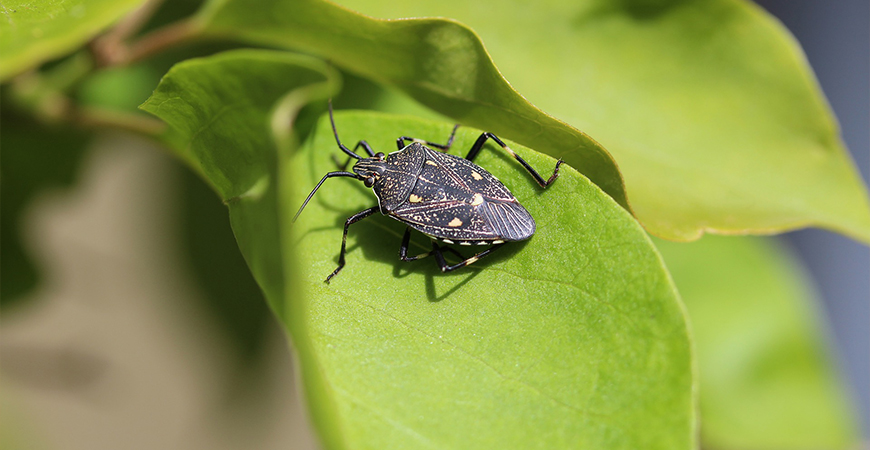
5) Stink Bugs
The stink bug is identified by its wide, shield-shaped body, usually 1/4 to 1-inch in length. In addition, you may see them in the garden in shades of green, yellow, brown, or grey.
This pest earns its name because it gives off an unpleasant odor similar to the smell of almonds. The scent they secret can attract other stink bugs, so be sure to rid your home of them if they are spotted.
Stink bugs cause damage to plants by sucking the sap out. However, the real damage is caused by the pests piercing the fruit, buds, stems, and leaves.
You will often find stink bugs on these garden plants:
- Beans
- Blackberries
- Cabbage
- Corn
- Eggplant
- Fruit trees
- Snapdragons
- Tomatoes
How do I get rid of stink bugs?
You can usually find these garden nuisances feeding on plant foliage. They are tenacious and will feed on any available area, including the stems and seeds.
Keep in mind the name of the common garden pest before you decide to squish them! After all, they are named ‘stink’ for a reason.
Organic ways to control stink bugs include:
- Insecticidal soap
- Kaolin clay
- Neem oil
- Diatomaceous earth
- Traps
Can beneficial insects help rid my garden of common garden pests?
One way to stop garden pests organically is to introduce beneficial predatory insects or ‘good bugs’ to the garden.
It may seem strange to attract more insects to your garden to control the bad bugs, but predatory insects are good because they make a meal of common garden pests.
Two preditors to consider are frogs and birds.
Home repair expert, Danny Lipford, mentions, “One of the best ways to control pests organically is through the use of beneficial predatory insects.” So introducing your current common garden pests to their predictors can help control these pests. However, other action plans may be needed if that doesn’t seem to help.
Did you know? The largest concentration of Japanese beetles is found in U.S. states that border the Mississippi River – Arkansas, Louisiana, Minnesota, Wisconsin, Iowa, Illinois, Missouri, Kentucky, Tennessee, and Mississippi.


